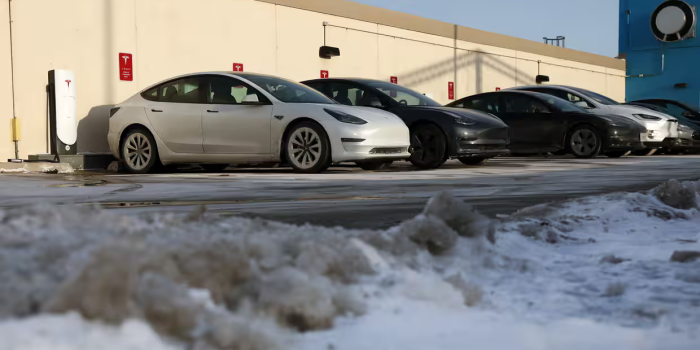In recent days, the bitter cold sweeping across the United States has presented a formidable challenge for electric vehicle (EV) owners, impacting their driving range and causing prolonged waits at charging stations. As temperatures plunged from Chicago to northern Texas, instances of EVs running out of power and facing charging difficulties have become more prevalent.
Television reports from Oak Brook, Illinois, near Chicago, and Ann Arbor, Michigan, highlighted Teslas struggling in frigid temperatures, with some running out of charge while waiting at Supercharger stations. Studies indicate that EVs experience a range loss ranging from 10% to 36% in subzero temperatures, coupled with slower charging rates. Some Tesla owners near Chicago reported an inability to charge their cars.

Experts acknowledge the impact of cold weather on EVs, attributing it to the slower flow of lithium ions through the liquid electrolyte inside EV batteries. This results in reduced energy release and diminished range, particularly in extreme cold. Neil Dasgupta, an associate professor at the University of Michigan, explained, “Pretty much anything that’s a chemical substance slows down when you get to a low temperature.”
While acknowledging the challenges, experts assert that EV owners can travel normally in cold weather with proper planning and adjustments. The issue is ensuring that batteries are warm enough for electrons to move efficiently, especially at fast-charging stations.
Challenges EV owners face, such as the car not accepting electricity until the battery reaches a suitable temperature, underscore the need for awareness and preparation. “Preconditioning” the battery before reaching a charging station is a crucial step, involving a half-hour warming process that may slightly reduce the range. Bruce Westlake, president of the Eastern Michigan Electric Vehicle Association, emphasized the importance of educating new EV owners on these procedures.
Experienced EV drivers stress the need for proactive planning, utilizing the car’s navigation system to precondition the battery before reaching a charging station. Kim Burney, a Tesla Model 3 owner, highlighted the significance of knowing charging station locations and monitoring the remaining range. Despite losing 15% to 20% of battery range in cold weather, she emphasized that proper planning mitigates the impact.

Looking to the future, experts predict advancements in EV technology, anticipating better ways to protect battery life and improve performance in cold weather. Ongoing investments in new battery technology, initially developed for military, aerospace, and undersea applications, are expected to enhance EV resilience in cold climates. As the EV market expands, tailored models with existing lithium-ion chemistry adapted for colder temperatures will likely emerge, balancing overall range and cold-weather performance.
In essence, while cold weather poses challenges for EVs, optimism prevails among experts and drivers alike, expecting future developments to improve cold-weather performance and overall EV driving experience.


